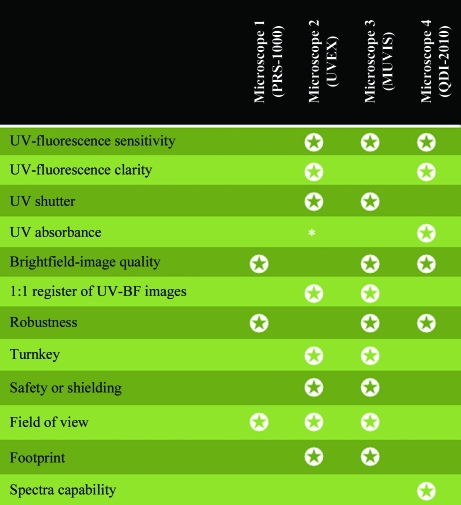Figure 4.
Comparison of prototype UV microscopes. Each model selected demonstrates an important feature when evaluating the efficacy of a UV microscope. The star ratings indicate the featural strengths of a microscope. List prices for each microscope are as follows: microscope 1, $80 000; microscope 2, $55 000–$80 000; microscope 3, $35 000; microscope 4, $200 000. * denotes work in progress. The word turnkey means that the microscope is ready to operate without extensive training. Other device types for UV–Vis monitoring of protein crystals (not part of this study) include the DUVI, which is part of the SpetroImager-501 system that measures dynamic light scattering in situ (Dierks et al., 2008 ▶; Meyer et al., 2009 ▶), and the Minstrel HT UV (Rigaku, Carlsbad, California, USA). Other device types for X-ray diffraction screening of protein crystals in situ include the recently developed Oxford Diffraction PX scanner (Varian, Palo Alto, California, USA) and the robotic arms that hold the crystallization plate vertical to a synchrotron source (Jacquamet et al., 2004 ▶) as implemented, for example, on the FIP beamline at the European Synchrotron Radiation Facility (Roth et al., 2002 ▶).

